Pest Alert: Asian Longhorned Beetle
ID
ENTO-556NP
Introduction
The Asian longhorned beetle (ALB; Anoplophora glabripennis) is not known to occur in Virginia. If it were to establish, ALB would threaten our street, backyard, and forest trees.
Adult Beetle Description
Adult ALB (Fig. 1) range in size from 25-37 mm (1-1.5”) in length. The banded antennae can measure over 70 mm (3”) long. ALB has a shiny black body with irregular white spots and blue tinted legs.
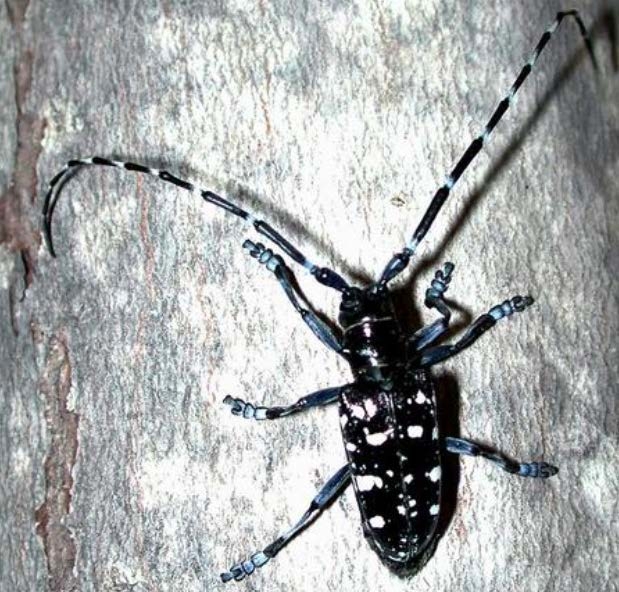
Egg and Larva
Female ALB lay 5-7 mm (0.25”) long eggs in shallow oviposition pits (Fig. 2) chewed in the bark. After hatching, the very small larvae bore into the tree. Full grown larvae (Fig. 3) can reach up to 50 mm (2”) long. ALB larvae are indistinguishable in appearance from the larvae of native roundheaded borers. Fully grown larvae pupate to the adult stage inside the host tree and then chew their way out.
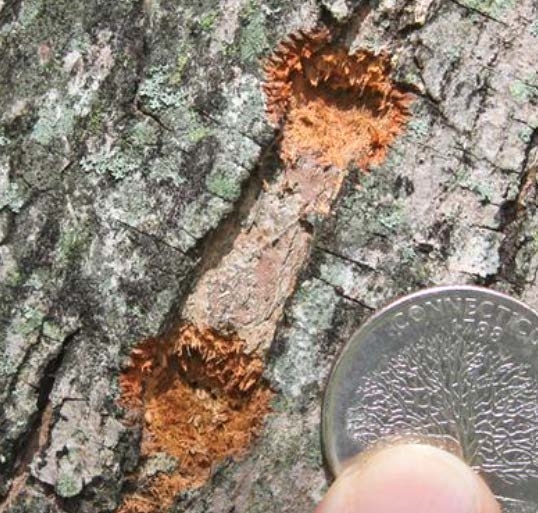
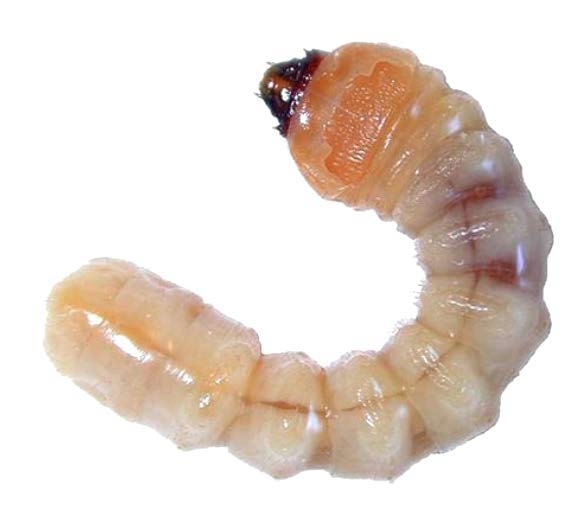
Host List
ALB has a wide host tree range in both Asia and the United States. Maple is the most common host and where ALB will likely have its biggest ecological impact. ALB also attacks birch, elm, golden raintree, London planetree/sycamore, horse chestnut/buckeye, mimosa, mountain ash, poplar, willow, ash, and katsura.
Damage
ALB adults emerge from large diameter exit holes in host trees when weather warms in the spring. (Fig. 4). Each hole is connected to a deep tunnel (Fig. 5) big enough to insert a pencil (Fig. 6), thus the pencil test is a good indicator of a possibly infested tree. After emergence, ALB females chew oviposition pits 10 mm (0.5”) in diameter where they lay eggs (Fig. 3). Initially the pit is light colored but darkens and may weep sap. Multiple exit holes and pits give trunks a spotted appearance (Fig. 4). Larvae tunnel initially in the cambium but later make large tunnels in the xylem (Fig. 5). Extensive large tunnels weaken the branch, causing them to break in strong winds.
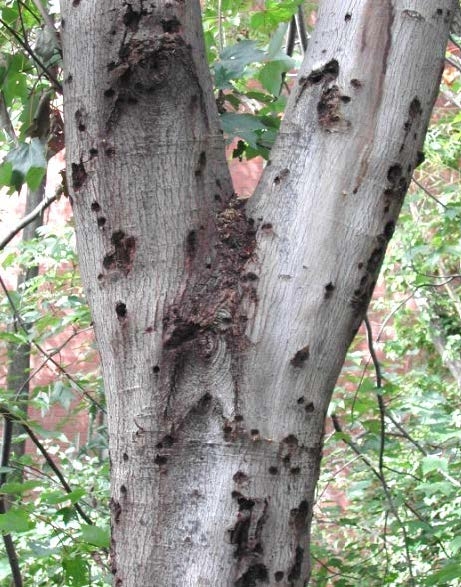
Distribution
ALB was first detected in 1996 in New York City. It has also been found in New Jersey, Illinois, Massachusetts, Ohio, South Carolina, and Ontario, Canada. Eradication efforts continue for infestations in Massachusetts, New York, Ohio, and South Carolina.
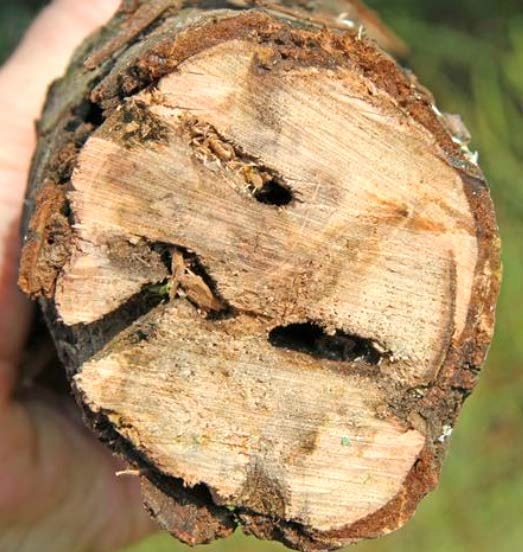
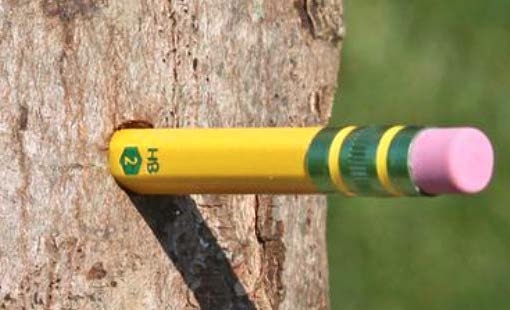
Reporting
Because many native insects resemble ALB, please capture suspect insects in case they need to be examined. Submit insect samples or photos of suspect damage to your Cooperative Extension office or County Forester.
Virginia Cooperative Extension materials are available for public use, reprint, or citation without further permission, provided the use includes credit to the author and to Virginia Cooperative Extension, Virginia Tech, and Virginia State University.
Virginia Cooperative Extension is a partnership of Virginia Tech, Virginia State University, the U.S. Department of Agriculture (USDA), and local governments, and is an equal opportunity employer. For the full non-discrimination statement, please visit ext.vt.edu/accessibility.
Publication Date
April 17, 2023



